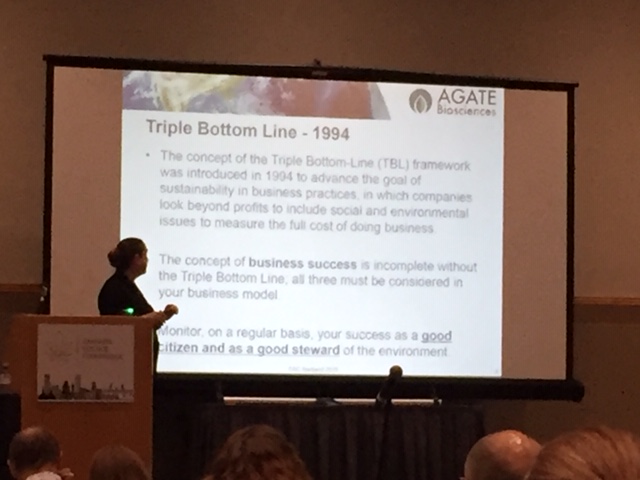More Cannabis Science Needed, Experts Say

Dr. Jacklyn Green, CEO of Agate Biosciences, discusses using the Triple Bottom Line to take a holistic look at cannabis to determine the full cost of doing business.
As the young cannabis industry develops into its mature self, the surety of its foundation in part centers on access to solid, reliable cannabis science, whether it’s for cultivation, product extraction, retailing and dispensaries, or transportation and distribution. We only know what we know, but if what we know is faulty to start with, the knowledge base we build on will eventually crumble.
That’s why I attended the Cannabis Science Conference held in September. The event intrigued me because it promised to bring together industry experts, suppliers, testing labs, research scientists, policymakers, medical practitioners, and others with the purpose of improving cannabis science. I wasn’t disappointed. Organizers lined up a wide range of industry experts that covered various topics related to analytical, medical, and cultivation tracks.
I concentrated on the cultivation track and gleaned some interesting insights into where the industry is now and where it’s headed in the advancement of cannabis science. If there was one overriding message at the conference, it was that more reliable, solid cannabis information is necessary to help the industry realize its true potential as a profitable, professional industry concerned about the needs and safety of its end consumers.
Here are just five of the many take-home messages from conference presenters.
- The cannabis industry needs to take a holistic approach, looking beyond profits to include social and environmental issues to measure the full cost of doing business, said track emcee and speaker Dr. Jacklyn Green of Agate Biosciences. Producers must examine their triple bottom line – people, profits, and products – to truly consider everything in the business model. As part of this, Green encouraged attendees to commit to sustainable practices and to start quality control through pharmacy-like standards now.
- Commercial cannabis producers have a tremendous opportunity to lead the charge in cannabis research, given the restrictions on academics, said the lead of Fluence BioEngineering’s research program Dr. David Hawley, who says the industry not only needs the science, it must also know how to implement it.
- As price compression continues, growers will only need to get more efficient as they grow. How well growers make use of their lighting will determine some of those efficiencies was one of the take-home messages from a presentation by Dr. Melanie Yelton, Vice President of Research at LumiGrow. She shared lighting efficiency lessons with cultivators such as more light equals more yield, light degradation matters, and light quality matters.
- Regarding genetics, tissue culture is one of the keys to preserving good, clean cannabis strains, as well as providing the industry with a better ability to scale up production. Speaker Dr. Hope Jones, Chief Scientific Officer of Emergent Cannabis Sciences, said one advantage tissue culture has over traditional propagation is that the vascular system of plants is not connected to their meristem cells, which are used for tissue culture. This is good news because disease is limited to the vascular system.
- State agencies will likely get tougher on pesticide use, said Dr.Stephanie Wedryk, Director of Research and Development for Rx Green Technologies. She foresees the pesticide piece of the cannabis market as headed in the future toward regulated and researched single molecules and additional label requirements, as well as needing to provide more application information and training.
If you’re interested in attending the Cannabis Science Conference, the next one takes place on April 6-8, 2020 at the Baltimore Convention Center.










